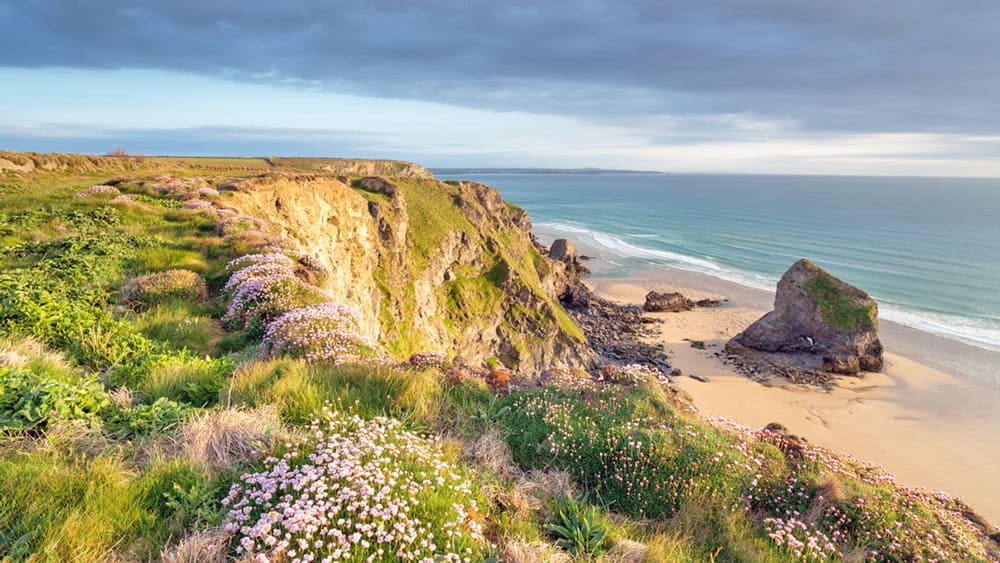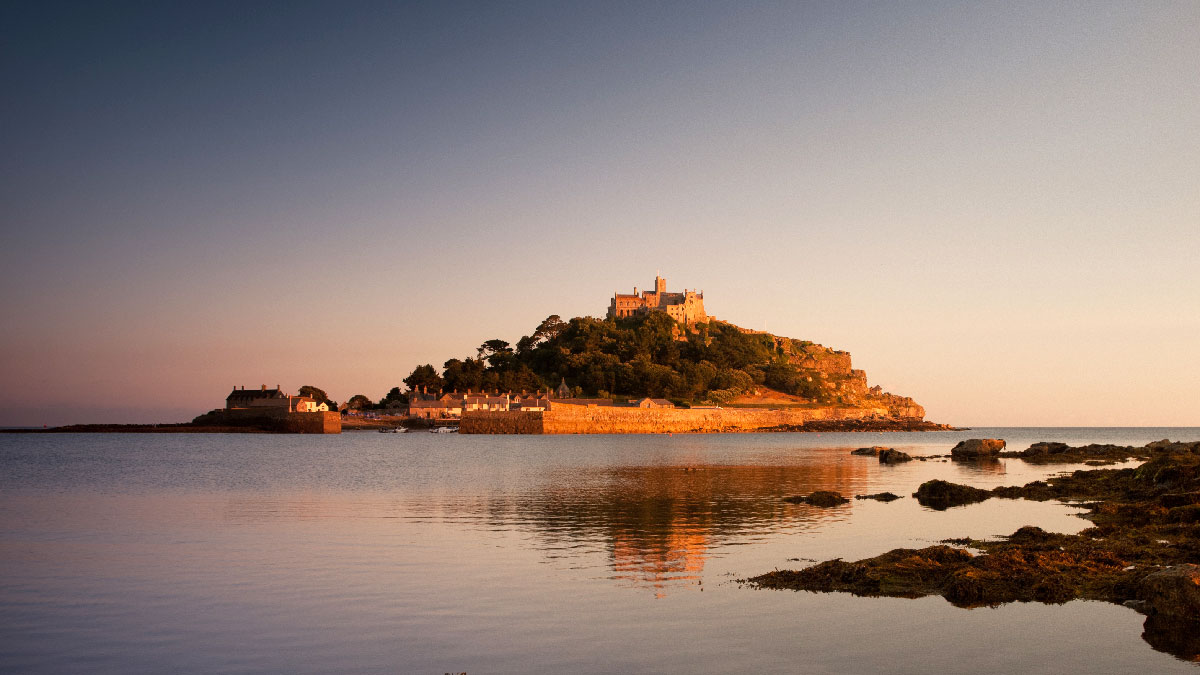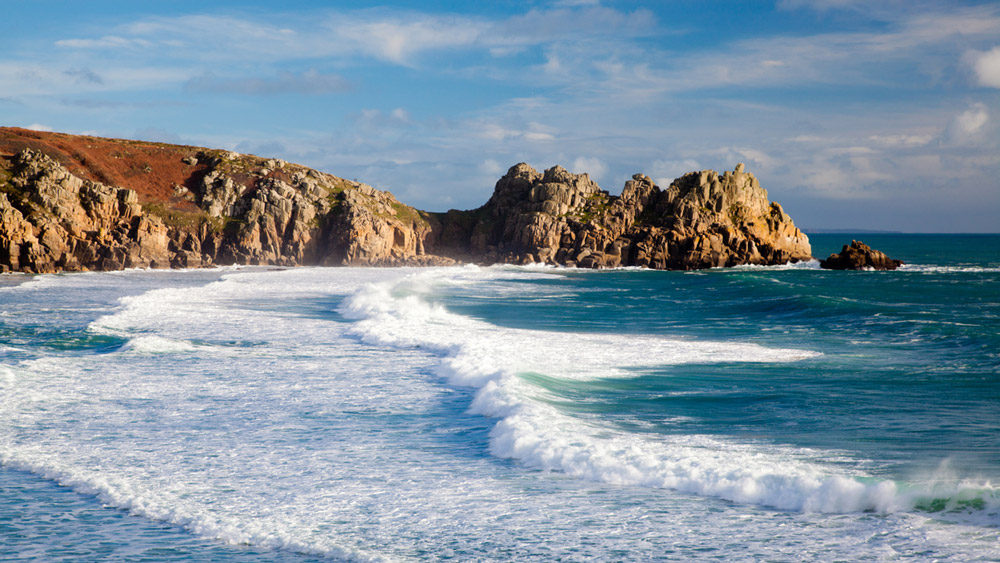Legendary Cornwall: Land of the Giants
Cornish folklore has been capturing our imaginations for centuries, much of its roots found in the ancient sagas of gods and monsters. The county’s tallest tales are about giants; colossal beings who could shape the land with their brute strength and bare hands, making for fantastical stories that draw parallels with Nordic myths and Welsh bardic lore.
These enduring chronicles continue to define Cornish heritage, passed down from generation to generation by way of spoken word or chapter and verse. Here’s our introduction to some of Cornwall’s most legendary giants for you to enjoy…
Warning: The following tales may not be for the squeamish or faint of heart
The Bedruthan Steps
The name Bedruthan is well-known in Cornwall for its association with one of the county’s most iconic coastal landmarks, the ‘Bedruthan Steps’.

As history goes, the giant Bedruthan is by far the youngest of our select group of gargantuans, his legend believed to have been invented to satisfy the curiosities of Victorian tourists – although some argue the story’s origins lurk deeper down the annals. The steps are in fact a series of sea stacks found on a stretch of coastline between Newquay and Padstow in the parish of St Eval.
The legend tells of an enormous giant travelling by the name Bedruthan who would use the sea stacks as steps as he traversed the Atlantic coast, no doubt helping himself to one or two sheep along the way. The sea stacks have their own individual names; (from north to south) Queen Bess, Samaritan Island, Redcove Island, Pendarves Island and Carnewas Island.
Cormoran & the Legend of the Causeway
The sparkling waters of Mount’s Bay on the south coast, home to the tiny tidal island known as St Michael’s Mount, provides the setting for our next Cornish legend. It is here that a giant known as Cormoran would quarry for lumps of granite along with his long-suffering wife, Cormelian, in their efforts to raise the coastal enclave. Tired from her labours, Cormelian decided to ease her load by picking only the lighter green stones, carrying them in her apron while her ‘busy’ husband slept. Unfortunately for the exhausted Cormelian her plan unravelled under the woken suspicions of her bleary-eyed beloved, who promptly upped and kicked her, breaking her apron strings and sending the green stones scattering into what we recognise today as the Mount’s ancient, cobbled causeway that sets out from Marazion Beach.

Those of you a little perturbed by Cormoran’s mean-spiritedness may be gladdened to hear that the giant did get his grizzly comeuppance at the hands of Jack the Giant Killer. The classic fairy tale, first printed in 1711, is set in Arthurian Cornwall and tells of farmer’s son Jack who outwits his gargantuan foe by digging a pit and covering it with straw and loose leaves. The blundering Cormoran stumbles shoulder-deep into the trap and falls foul of hero Jack’s swinging pick axe.
Bolster, the Love-Sick Ogre
The giant in our next tale was a real behemoth. Legend has it that the mighty Cornish earth-trembler known as Bolster could stand with one foot on St Agnes Beacon and the other on Carn Brea in the neighbouring parish of St Just, a distance of six miles as the crow flies: an impression of his fingers can be found set in stone in a valley close to Chapel Porth. Bolster had a wife who he was continually malicious towards; making her toil with rocks while he broke wind and snoozed on a belly-full of mead and mutton.
At this time, there also lived a devout maiden who answered to the name Saint Agnes; the most beautiful woman in all of Kernow, whose enchanting form had attracted the unwanted affections of the ham-fisted, tree-splitting Bolster. Bolster became obsessed, stalking Saint Agnes and driving her to the edge of reason with his desperate grunting and lustful guffawing. Many a brave squire stepped forward in defence of her honour only to be snapped in two and their ribs used as toothpicks. It seemed nothing could curtail the hill-strider’s unwelcome advances, nothing, that is, except for the cunning of the object of his affections.
One sunny afternoon, while out picking wildflowers in the meadow, Saint Agnes felt the earth shudder (and not in the biblical sense) as a monstrous, hairy foot flattened the sweet-smelling pasture. “I’ve come to declare my love for you,” rumbled Bolster. “Let me nestle you in my armpit hairs and whisper sweet nothings in your perfectly-formed lugholes.” The reek of Bolster’s wild garlic breath was enough to bring up Saint Agnes’ breakfast and the sight of his throbbing loins made her want to run for cover. “If you love me like no other” shouted back the virginal saint, “then show me by cutting deep into your wrist to fill the hole over yonder with your life-blood.” She was pointing to a deep gully that still exists today in the Chapel Porth cliffs.
The unsuspecting giant didn’t think twice, drawing his knife from his scabbard and slicing the veins of his forearm to watch the gore flood down the deep crevasse. Little did he know that the hole was in fact bottomless and fed straight into the Celtic sea; torrents of his hot blood turning the ebb-tide crimson. Bolster could feel his mighty legs quake as his eyes rolled into the back of his granite-thick skull, but still he clenched his fist to allow his blood to spill hour after hour. Finally, as the sun set on the ocean, Bolster collapsed on the headland, dead as a doornail, with nothing but echoes to fill his empty arteries and hollow chambers.
Despite the relief and elation of finally ridding herself of the giant’s sinister claim, Saint Agnes still had room in her heart for pity, laying down a posy of meadow flowers next to the brute’s lifeless fingers, a brief moment of grace before the magpies began pecking at the whites of his eyeballs.
The Kindly Giant of Carn Galver
Not every giant was cruel and destructive, as was the case for the giant of Carn Galver who protected his local community from roving marauders. Ever-grateful for his allegiance, villagers would bring the noble colossus gifts of sheep and goats to satisfy his cavernous appetite. He was often seen playing games of quoits with huge granite boulders and would rock himself to a slumber on Logan Rock, also known as ‘the rocking stone’, which to this day remains a popular tourist attraction.

The iconic Logan Stone on the cliffs of Porthcurno that once gently rocked the kindly giant of Carn Galver to sleep after he’d wrestled and seen off hill-striding marauders.
Blunderbore the Terroriser of Travellers
Few Cornish giants were as mischievous and maligned as Blunderbore of Ludgvan Lese who made a habit of terrorising travellers on the road to St Ives, many of them drowning in his digestive juices.
Blunderbore, whose name has also been recorded as Thunderbore or Blunderbuss, finally met his comeuppance at the hands of Jack the Giant Slayer, along with his brother Rebecks. Having followed the villain’s trail of destruction, our hero Jack lands in some hot water, finding himself on the luncheon menu along with some local dignitaries. Jack masterminds a daring escape from Blunderbore’s dungeon to slip nooses round the sleeping brothers’ necks, sliding down the taught rope and slicing open their jugulars. Blunderbore suffers a similar fate in the Cornish fairy tale Tom the Tinkeard: after nearly being swotted by an uprooted elm tree, plucky Tom snaps off an axle from his haywain and delivers a lethal joust into Blunderbore’s torso. In return for a proper burial the mortally wounded giant entitles all his wealth to Tom on his parting breath.
The Giant Wrath of Portreath
In a dark gorge near Portreath there once lived a giant called Wrath who struck fear into the hearts of the honest folk of St Ives, and also ate more than his fair share of them. Wrath would lie in wait for fishing boats, wading out and brushing the sailors aside like ants on a leaf before drawing in the vessels on ropes attached to his girdle. Back in his lair he would dine on the meatier mariners and toss the bonier ones back to the sea. Another one of his dastardly deeds was to throw giant rocks at passing ships bound for St Ives, many of which can still be seen at ebb-tide forming the perilous reef off Godrevy Head. To this very day the fishermen of St Ives go out of their way to avoid the waters around Wrath’s gorge, the ruin of many an able seaman.
Every year, the Cornish village of St Agnes holds a pageant to celebrate the story of Bolster the giant, retelling his legend on the Chapel Porth cliffs.
